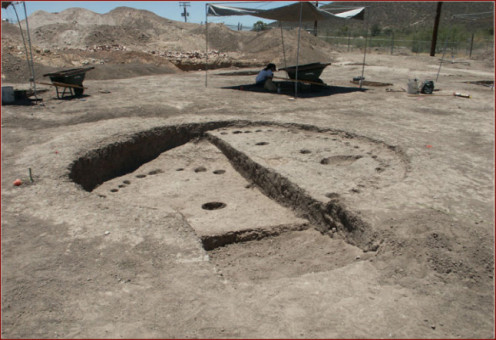

Early in the Hohokam cultural sequence these consisted of ball courts and small, low, circular mounds made of earth. Within the villages were monumental public works. Accompanying the canals were extensive villages that covered hundreds of acres and were occupied by several hundred people. Not even the complex societies in Mesoamerica had such extensive irrigation canals. In fact, the Hohokam had the largest and most complex irrigation systems of any culture in the New World north of Peru. The Hohokam are probably most famous for their creation of extensive irrigation canals along the Salt and Gila rivers. During this time, they achieved remarkable successes. 1450, barely 90 years before Spanish explorers arrived in the Southwest. The Hohokam were, in the words of archaeologist Emil Haury, “masters of the desert.” Their cultural pattern existed from the first years A.D.

Hohokam influences were even more widespread, with Hohokam-style architecture and artifacts as far north as Flagstaff, Arizona, south into northern Sonora, Mexico, and east into southwestern New Mexico. The Hohokam lived in the Phoenix Basin along the Gila and Salt Rivers, in southern Arizona along the Santa Cruz and San Pedro Rivers, and north on the Lower Verde River and along the New and Agua Fria Rivers. The word Hohokam is a Piman language term for “all used up” or “exhausted,” and the name given by archaeologists to the ancient farming peoples of the southern deserts of Arizona. Photo Credit: Dan Boone/Ryan Belnap, Bilby Research Center, Northern Arizona University.


 0 kommentar(er)
0 kommentar(er)
